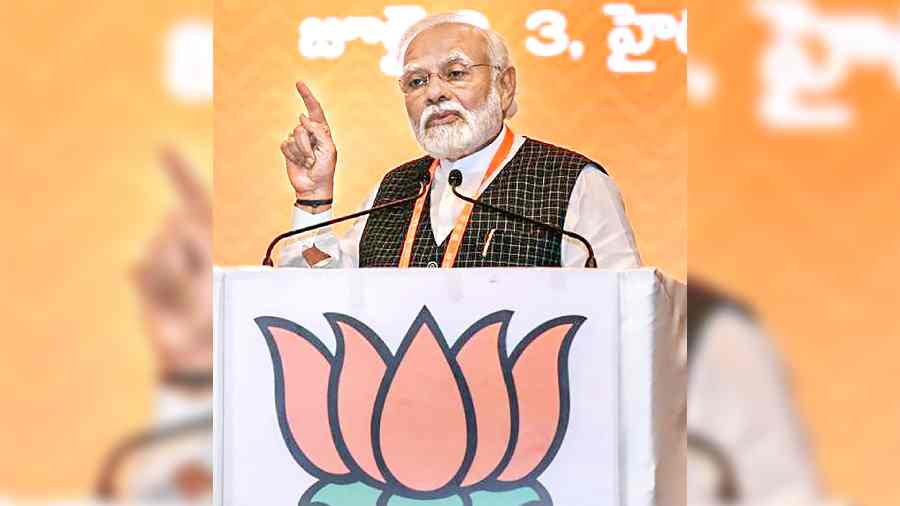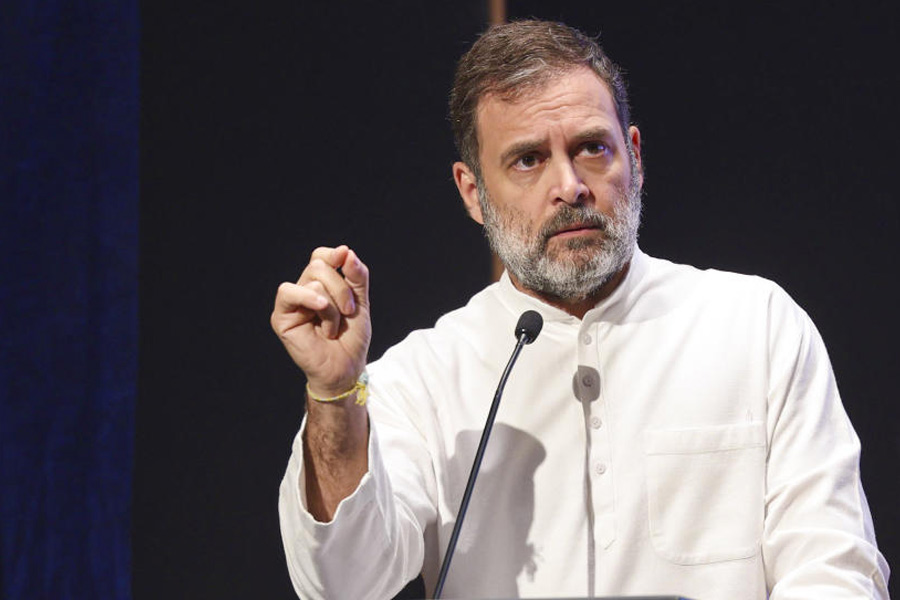Barring truly unexpected developments in the coming weeks, it is now certain that Draupadi Murmu, the candidate of the Bharatiya Janata Party-led National Democratic Alliance, will coast to an emphatic victory in this month’s presidential election. Despite the odd speculation in the media that the race to the Rashtrapati Bhavan would make Prime Minister Narendra Modi sweat, historical precedents have always favoured the ruling dispensation. The only exception was the contest in 1969 when Indira Gandhi used the presidential election to teach the old guard of the Congress a lesson. Apart from V.V. Giri’s narrow win over Neelam Sanjiva Reddy, presidential elections have been woefully one-sided. It will be no different this time and the outcome may witness a section of the legislators from avowedly anti-BJP parties preferring an adivasi lady over Yashwant Sinha.
The ease with which the Bharatiya Janata Party was able to get its way in the presidential election — and this is likely to be repeated in the election of the vice-president — may well be attributed to the choice of Murmu. In a sphere of public life where symbolism and perceptions matter, it was nothing short of a proverbial masterstroke for the top BJP leadership to home in on the quiet, non-controversial, adivasi lady of humble origins from Odisha. Modi’s use of the 75th year of Indian independence to showcase the social enlargement of Indian democracy proved impossible for the Opposition to counter. Indeed, preoccupied with its own internal muddles, the Congress didn’t even try.
Yet, to see the choice of Murmu as a one-off act of cleverness to overcome a possible serious contest would be erroneous. That flexibility is an abiding hallmark of the Modi-Amit Shah duo is undeniable. This has made it difficult for the Opposition (at the national level) to build a narrative that casts the Modi government as either far-Right or the populist Left. As recent events so vividly demonstrate, labelling the BJP into predetermined ideological compartments has become virtually impossible.
In Maharashtra, to cite the most recent example, the BJP achieved a momentous ideological victory by encouraging a revolt in the Shiv Sena on the plank of Hindutva. In earlier years, the BJP had often been wrong-footed in coalition politics for its commitment to Hindutva. This avowedly pro-Hindu tilt was seen to break the consensus established by the Congress (and the Left) in the Nehruvian era. It should not be forgotten that it was the dual-membership issue that served as the cloak for the fierce personal ambitions of the likes of Charan Singh and ended up destroying the Janata Party government in 1979. Indeed, in walking away from the politics of aggregation in the 1980s, the BJP decided that the inevitable cost of standing up for Hindutva was what L.K. Advani then called “majestic isolation”. In Maharashtra, the wheel turned full circle and Uddhav Thackeray lost the plot on account of his insufficient commitment to Hindutva. The significance of this turnaround should not be underestimated.
However, the recently concluded assembly election in Uttar Pradesh presents a different picture. The facile view — often preferred by those whose visceral hatred of Modi subsumes their analytical prowess — is that with Mahant Adityanath at the helm, the BJP won its second term on the strength of deepening sectarian polarisation, just as it did under Kalyan Singh in 1991. That rival Hindu and Muslim consolidations played a role in some areas of western UP and in a few urban clusters isn’t in any doubt. Nor can it be contested that in the final stages of a campaign, the BJP has a tendency of invoking ‘emotional’ issues that help in motivating the faithful. Yet, the disaggregated results suggest that the Hindu consolidation led to many ‘subaltern’ communities, hitherto outside the saffron orbit, voting for Modi’s party. In hindsight, it is now being recognised that the increased penetration owed mainly to, first, better caste representation in the choice of candidates and, second, to the redistributive welfare programmes of the Centre, especially during the Covid pandemic. The beneficiaries of Central schemes in areas such as housing, drinking water, toilets, cooking gas and free rations and vaccination appear to have created a distinct constituency of ‘labharthis’ (beneficiaries), especially among women and the poorest communities. Thus, traditional Hindutva was supplemented with targeted welfare to produce a winning social coalition.
Nor was this an unintended consequence of establishing a welfare apparatus that made full use of technology for effective delivery. In his numerous interventions at the BJP national executive meeting in Hyderabad on July 2-3, Modi subtly drove home the larger message of a social rejig of the party. In the early-1980s, the BJP was undeniably a party whose core strength came from the upper castes and small businessmen. It was, to a very large extent, an extension counter of the Rashtriya Swayamsevak Sangh. The social reach was enlarged in the wake of the Ayodhya movement that brought in substantial backward castes into the saffron fold. Indeed, it was the OBC-isation of the BJP leadership that yielded rich dividends from 1996. What is now being attempted under the broad umbrella of ‘Garib Kalyan’ is a mopping-up exercise of Dalit and tribal communities that were largely in the Congress fold since Independence. The discernible disintegration of the Congress since 2014 has created a vacuum that the BJP is seeking to fill. Alongside, there is the party’s geographical expansion in Northeast India and states such as Bihar, Telangana and even Tamil Nadu. It is significant that the leadership in these new growth areas is largely from non-elite communities. The ‘new’ versus ‘old’ tussle in some BJP state units reflects the transition of an old ideological movement into a more representative unit. This is not to suggest that old-style Hindutva is being subsumed by what Marxists call ‘economism’. It indicates that the Hindu nationalist politics of the future will have a more diverse and representative character.
In effect, Modi is attempting to add ‘by the poor’ leadership to ‘for the poor’ programmes. In the context of Indian politics, the move is revolutionary.










